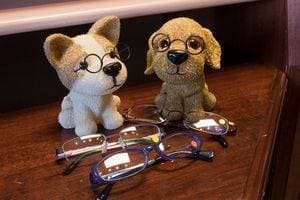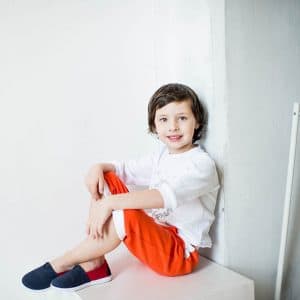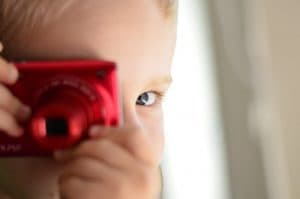Vision therapy has been shown to be the most effective solution for lazy eye, as it treats the underlying cause of the condition.
A lazy eye can develop when the neural connections between the affected eye and the brain are weakened, and the visual signals from that eye cannot be interpreted or processed efficiently.
As a result, the brain begins to actively ignore the visual information coming from the affected eye to avoid blurry or double vision (diplopia). This is called suppression.
Binocular vision therapy is essential to teach the two eyes to work together and prevent suppression of the lazy eye.
If not treated effectively, suppression can lead to an eye turn (strabismus), and in some cases, unilateral vision loss.
Different methods of lazy eye treatment
1. Prescription eyewear
Amblyopia that develops from a significantly high refractive error may be corrected with optical lenses. These lenses help to correct the refractive error and provide the lazy eye with the best vision possible.
Studies indicate that while this type of passive treatment can improve visual acuity, it does not treat the underlying cause of the lazy eye.
Therefore, in most cases, a program of vision therapy is usually prescribed in combination with the corrective eyewear, to retrain the neural connections between the lazy eye and the brain.
2. Eye patching
Although eye patching for lazy eye has been common practice for the last 300 years, it is no longer the most effective treatment for lazy eye.
Eye patching involves placing an eye patch over the stronger eye to actively encourage the lazy eye to work. This theory holds that through patching of the “good” eye, the brain will begin to acknowledge and interpret the visual input coming from the lazy eye, thereby recovering vision.
However, in many cases, patching has been linked to lazy eye regression, since patching alone cannot repair the visual system and neural connections— the underlying cause of lazy eye.
As a result, eye patching is usually prescribed in combination with a program of vision therapy.
If your child has been diagnosed with lazy eye, contact an eye doctor near you, who can discuss the best treatment options.
SEE RELATED: “Lazy Eyes” Are Not Lazy
3. Atropine eye drops
Similar to patching, atropine drops are applied to the stronger eye in order to blur vision and force the lazy eye to become stronger. Many parents prefer these drops over patching since they are less conspicuous than an eye patch. Though, these drops can cause stinging and blurry vision— which generally results in inadequate patient compliance.
Like patching however, atropine eye drops are typically prescribed along with a vision therapy program, as they too cannot fully treat the root of the condition.
4. Binocular vision therapy
Vision therapy targets the development and strengthening of the neural connections between the eyes and the brain, and encourages the two eyes to work together for clearer, more comfortable vision.
A key component of vision therapy is the development of binocular vision.
Binocular vision is when the two eyes work as a team and the brain no longer needs to suppress the lazy eye.
Binocular vision can be noted when the child begins to see 3D images, and their depth perception and stereopsis improve.
Vision therapy can improve binocular vision, visual processing, reading fluency, depth perception, and eye-hand coordination.
Numerous research studies on the efficacy of vision therapy have shown that the improvements made during vision therapy are maintained only when the two eyes are trained to work together (stereopsis)— facilitating a deeper neurological connection between the two eyes and the brain.
How does vision therapy work?
Vision therapy has shown to be the most effective treatment for lazy eye as it gets to the root of the problem and strengthens the neural connections necessary for efficient eye-brain communication.
Each vision therapy program is customized to the individual needs of the patient, and can include the use of optical lenses, prisms, filters, occluders, and other specialized equipment designed to actively encourage the lazy eye to work.
Research shows that in order to obtain optimal treatment results, each vision therapy program should consist of office-based treatment one to two times per week, and daily home practice to support the skills learned.
A vision therapy program to treat lazy eye may include:
- Accommodation (focusing)
- Fixation (visual gaze)
- Saccades (eye jumps)
- Pursuits (eye tracking)
- Spatial skills (eye-hand coordination)
- Binocular vision (the eyes working together)
- Stereopsis (3-D vision)
If you think your child may have a lazy eye, schedule an eye exam as soon as possible.
Binocular vision is essential for academic and athletic success, as well as the successful performance of many daily routine tasks.
LEARN MORE: Vision Therapy for Lazy Eyes
Speak with your eye doctor about beginning a program of vision therapy to treat your child’s lazy eye and give them the visual skills they need for all aspects of life.









